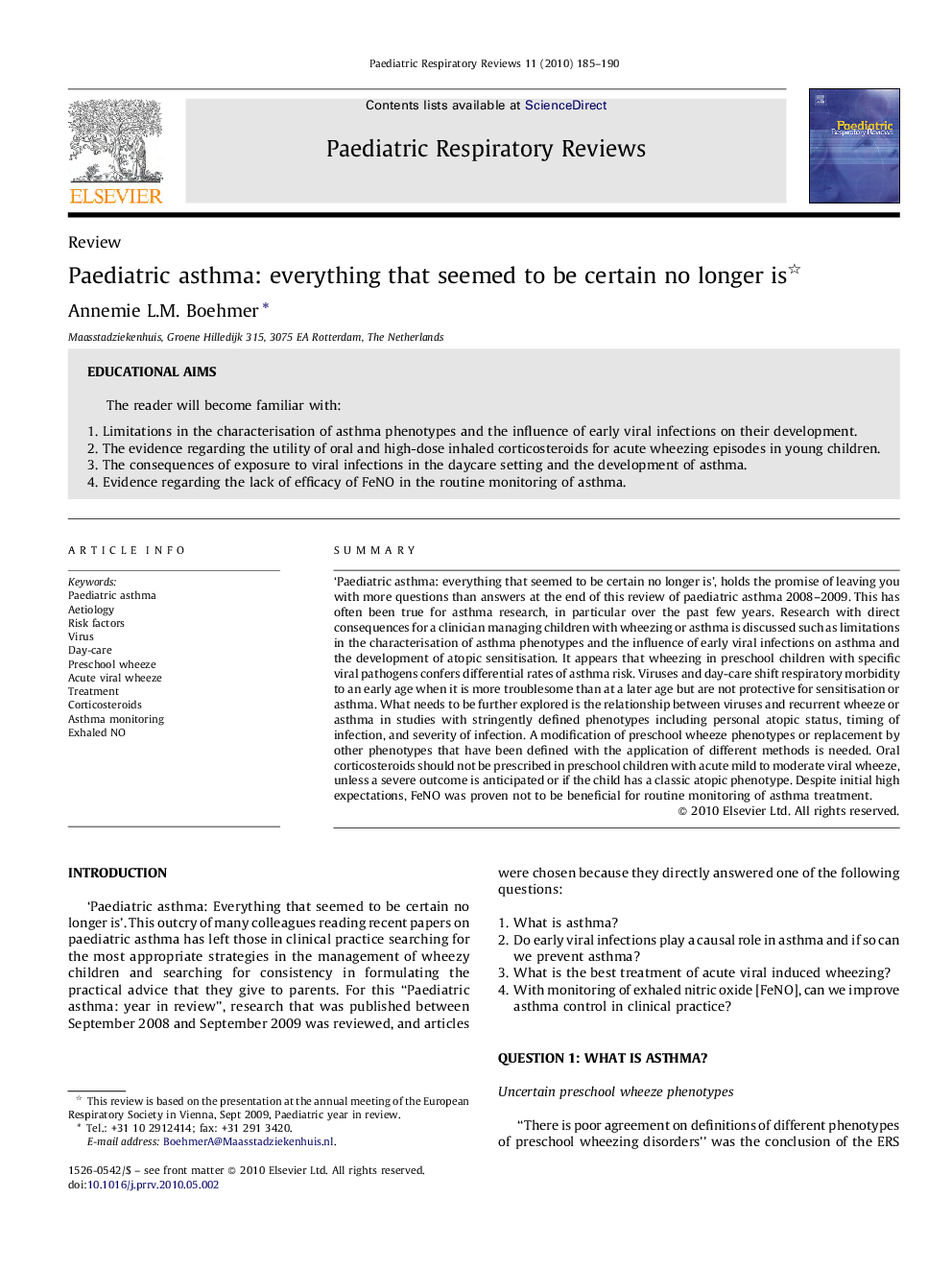| Article ID | Journal | Published Year | Pages | File Type |
|---|---|---|---|---|
| 4171297 | Paediatric Respiratory Reviews | 2010 | 6 Pages |
Summary‘Paediatric asthma: everything that seemed to be certain no longer is’, holds the promise of leaving you with more questions than answers at the end of this review of paediatric asthma 2008–2009. This has often been true for asthma research, in particular over the past few years. Research with direct consequences for a clinician managing children with wheezing or asthma is discussed such as limitations in the characterisation of asthma phenotypes and the influence of early viral infections on asthma and the development of atopic sensitisation. It appears that wheezing in preschool children with specific viral pathogens confers differential rates of asthma risk. Viruses and day-care shift respiratory morbidity to an early age when it is more troublesome than at a later age but are not protective for sensitisation or asthma. What needs to be further explored is the relationship between viruses and recurrent wheeze or asthma in studies with stringently defined phenotypes including personal atopic status, timing of infection, and severity of infection. A modification of preschool wheeze phenotypes or replacement by other phenotypes that have been defined with the application of different methods is needed. Oral corticosteroids should not be prescribed in preschool children with acute mild to moderate viral wheeze, unless a severe outcome is anticipated or if the child has a classic atopic phenotype. Despite initial high expectations, FeNO was proven not to be beneficial for routine monitoring of asthma treatment.
